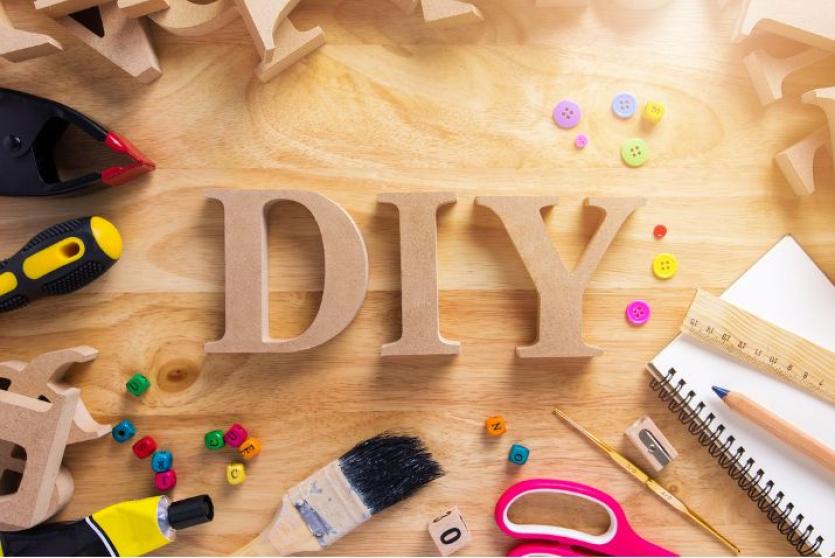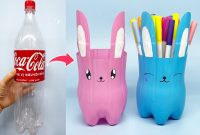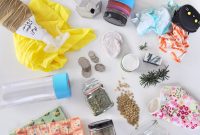Do-it-yourself plastic making has become a popular and fun activity that lets people use their imaginations while working with a variety of materials. No matter how experienced you are as a maker, learning how to use different plastic making skills will help you make a wide range of one-of-a-kind items.
I. The Beginning
What Does “Do It Yourself Plastic Crafting” Mean?
Do-it-yourself plastic crafting means making things by hand out of different kinds of plastic. A lot of people are using this type of art to show themselves these days.
B. Getting more popular
With the rise of the internet and social media, making crafts out of plastic on your own has become popular all over the world. Fans share their work, concepts, and methods, which makes the group lively and helpful.
II. Important Materials and Tools
A. Simple Tools
It’s important to get tools like heat guns, moulds, and cutting tools before you start making with plastic. These basic steps lay the groundwork for projects that turn out well.
B. Different Kinds of Plastic
It is very important to know what the different types of plastic are like. From polyethylene that is bendable to polycarbonate that is hard, each type has its own qualities that affect how it is made.
C. Rules for safety
Safety rules must be followed when working with heat and different tools. Wearing protective gear and making sure the work area has good air flow are important safety measures.
III. The Basics of Moulding Plastic
A. Techniques for shaping heat
Crafters can make metals into any shape they want by learning how to use heat. With techniques like blow moulding and heat gun shape, you can be creative with your designs.
B. Making Injection Moulds at Home
Looking into do-it-yourself injection moulding helps you learn more about mass production methods. This advanced method lets crafters make things with lots of small details.
C. The process of vacuum forming
Crafters can make complex, three-dimensional forms with vacuum making, which is a flexible method. When you know the basics of vacuum making, you can do a lot of different projects.
IV. Creative Art Projects with Plastic
A. Making Paper Jewellery
Making personalised jewellery out of plastic lets you come up with new patterns. Plastic is a lightweight and flexible material that can be used to make everything from earrings to bands.
B. Home Decor Items Made to Order
Custom plastic decorations can make your living area look better. Lamp shades, wall art, and vases can all be made to fit your style and colour tastes.
C. Gifts you can personalise
Do-it-yourself plastic making lets you make thoughtful, one-of-a-kind gifts for family and friends. Items that were made by hand are special because they hold memories and show how dedicated the maker is.
V. How to Fix Common Problems
A. How to Handle Warping
When working with plastic, warping is a regular problem. Knowing how to stop and fix warping will make sure that your projects turn out well.
B. Getting Rid of Air Bubbles
Adding air bubbles to your works can make them look bad. Learn how to get rid of or minimise air bubbles so that the finish is smooth.
C. Tips for Finishes That Look Better
In plastic crafts, it’s important to get a smooth finish. Discover useful sanding, shining, and finishing tips that will help you make your projects look better overall.
VI. More advanced methods
A. Adding more than one colour
Use multi-color blending methods to take your work to the next level. Making things with different colours gives them more depth and visual interest.
B. Adding Texture
When you make with plastic, you can give your things different surfaces. Try different techniques, like cutting and etching, to give your works a unique and tactile feel.
C. Putting in LED parts
Adding LED parts to your plastic projects will make them more creative and useful. LEDs add a modern touch to everything from lit statues to useful things.
7. How to Make Do-It-Yourself Plastic Crafts Last
A. Plastics that are good for the environment
Choose eco-friendly products for your projects to be more environmentally friendly. Biodegradable and recycled plastics help crafters be less harmful to the earth.
B. Reusing and recycling
Find new uses for plastic items to cut down on trash and support a circular economy. Making new things out of old plastic items adds a sustainable element to your crafting projects.
Getting rid of waste
Plan projects well and recycle scraps to cut down on waste. Using mindful techniques can help you do more eco-friendly plastic crafting at home.
VIII. Showing Off Your Work
A. Sites for social media
Use social media sites to show off your work to the world. Join the creating group, get comments, and share your unique projects to inspire other people.
B. Exhibitions in the area
Take part in craft shows in your area to show off your skills. Making connections with other artists and getting straight feedback will help you along the way.
C. Shopping sites online
You might want to sell your works on online markets. You can share your interest with more people when you turn your hobby into a small business.
IX. Pros of Making Plastic Crafts Yourself
A. Use as medicine
Making crafts out of plastic on your own can be relaxing, helping you relax and relieve stress. Crafting is a relaxing activity that helps people forget about the things that stress them out in their daily lives.
B. Hobbies That Don’t Cost Much
Do-it-yourself plastic making doesn’t cost as much as some other hobbies. A lot of people can do it because the basic tools and ingredients are not too expensive.
C. Getting better at being creative
Mastering plastic making improves creative thinking, from coming up with ideas for designs to finding solutions to problems. The process of always learning helps people grow as people and as artists.
X. Community and Working Together
a. Joining communities for do-it-yourself plastic crafting
Join online and local creating groups to meet people who like the same things you do. Crafting is more fun when you share your experiences, give and receive tips, and work together on projects.
B. Projects done together
Work on projects together with other artists. When you work with other people, you get new ideas and can improve your skills by sharing what you know.
C. Giving Hints and Tips
Take part in the creating community by sharing your tips and tricks. Sharing what you know creates a setting where people can help each other and work together.
11. What’s New in Do-It-Yourself Plastic Crafting
A. Improvements in technology
Keep up with the latest technology advances in making with plastic. New tools and methods can completely change the way you craft, opening up new ways to be creative.
B. New and Different Materials
Keep an eye out for new plastics that come out on the market. Try using new materials in your projects to make them more interesting and unique.
C. New fashions and styles
Check out how styles and patterns are changing in the world of do-it-yourself plastic making. By keeping up with trends, you can make sure that your works are always fresh and attractive.
XII. Motivational Success Stories
A. Well-Known D.I.Y. Crafters
Read about the successes of well-known do-it-yourself makers. Understanding their paths and struggles can inspire and direct your own making projects.
B. Dealing with Problems
Every crafter has problems to solve. When things get hard on your making journey, reading stories about people who overcame problems can give you hope.
C. Creating a Name
People who want to turn their hobby into a business should read about makers who built their names successfully. It can be very helpful to learn about branding and marketing tactics.
Chapter 13: The End
A. A Review of the Main Points
To get good at do-it-yourself plastic crafting, you need to know how to use basic tools, try out different moulding methods, and let your imagination run wild by making unique projects.
B. Reminding readers to read
Accept that you will need to learn new things, enjoy the artistic process, and don’t be afraid to try new things. Making things out of plastic on your own is a trip full of finding and pleasure.
FAQs
Can I start making things out of plastic on my own?
Of course! Begin with easy jobs and work your way up to more difficult ones.
When I work with plastics, are there certain safety steps I should take?
Yes, you should always wear safety gear, work in a well-ventilated area, and follow the safety rules for the tool you are using.
How can I fix common problems with my plastic projects, like them warping?
Changing the amount of heat, using the right moulds, and trying different ways to cool can help stop cracking.
Why would you want to join groups for do-it-yourself plastic crafts?
By joining groups, you can learn from each other, share your experiences, and work together with other fans.
Is making with plastic at home an eco-friendly hobby?
It’s possible! For a better way to craft, choose plastics that are good for the environment, recycle materials, and use methods that won’t harm the environment.





